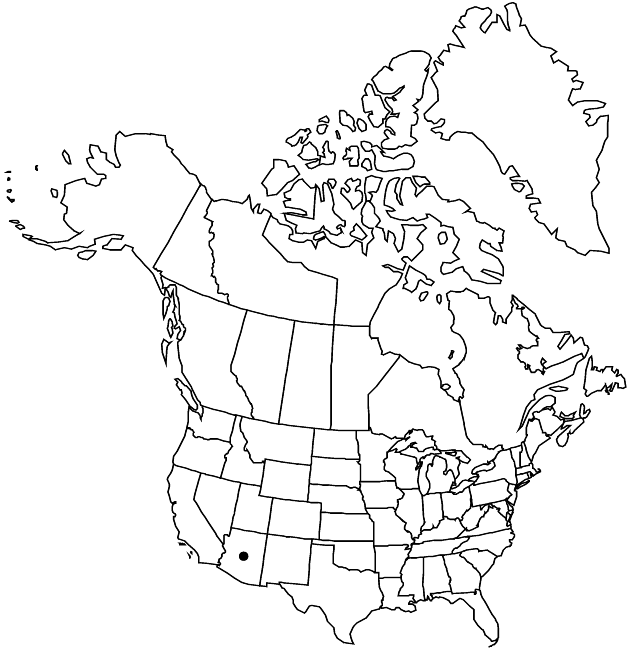Perityle cochisensis
Sida 5: 123. 1973.
Perennials or subshrubs, 4–12 (–15+) cm (usually erect, compact, sometimes spreading, moderately to densely leafy); usually glabrate, sometimes sparsely or densely short-hairy, rarely sparsely villous. Leaves: petioles 5–30 mm (usually equal to or longer than blades); blades deltate-orbiculate, ovate, or subdeltate, 5–27 × 6–27 mm, irregularly lobed, lobes 3–5, ultimate margins serrate or lobed. Heads usually borne singly, 8–10 × ca. 10 mm. Peduncles 5–10 mm. Involucres broadly campanulate to hemispheric. Phyllaries 12–22, lanceolate to ovate, 4.5–6.5 × 1–2.5 mm. Ray-florets 0. Disc-florets 30–45 (–60); corollas yellow, tubes 0.8–1 mm, throats funnelform to narrowly campanulate, 1.8–2 mm, lobes 0.6–0.8 mm. Cypselae oblong to narrowly oblanceolate, 2.5–3 mm, margins thin-calloused, sparsely short-ciliate; pappi usually of 1 (–2) unequal, distally subplumose bristles 2–2.5 mm, sometimes 0.2n = 34.
Phenology: Flowering spring–fall.
Habitat: Granite rock crevices in canyons
Elevation: 1500–2100 m
Discussion
Of conservation concern.
Perityle cochisensis is known only from the Chiricahua Mountains of southeastern Arizona. Some collections of P. lemmonii from the Big Hatchet Mountains of Hidalgo County in southwestern New Mexico may have petioles approaching the length of the blades as in P. cochisensis. The densely pilose or villous induments of those New Mexican plants is similar to that of P. lemmonii.
Selected References
None.
